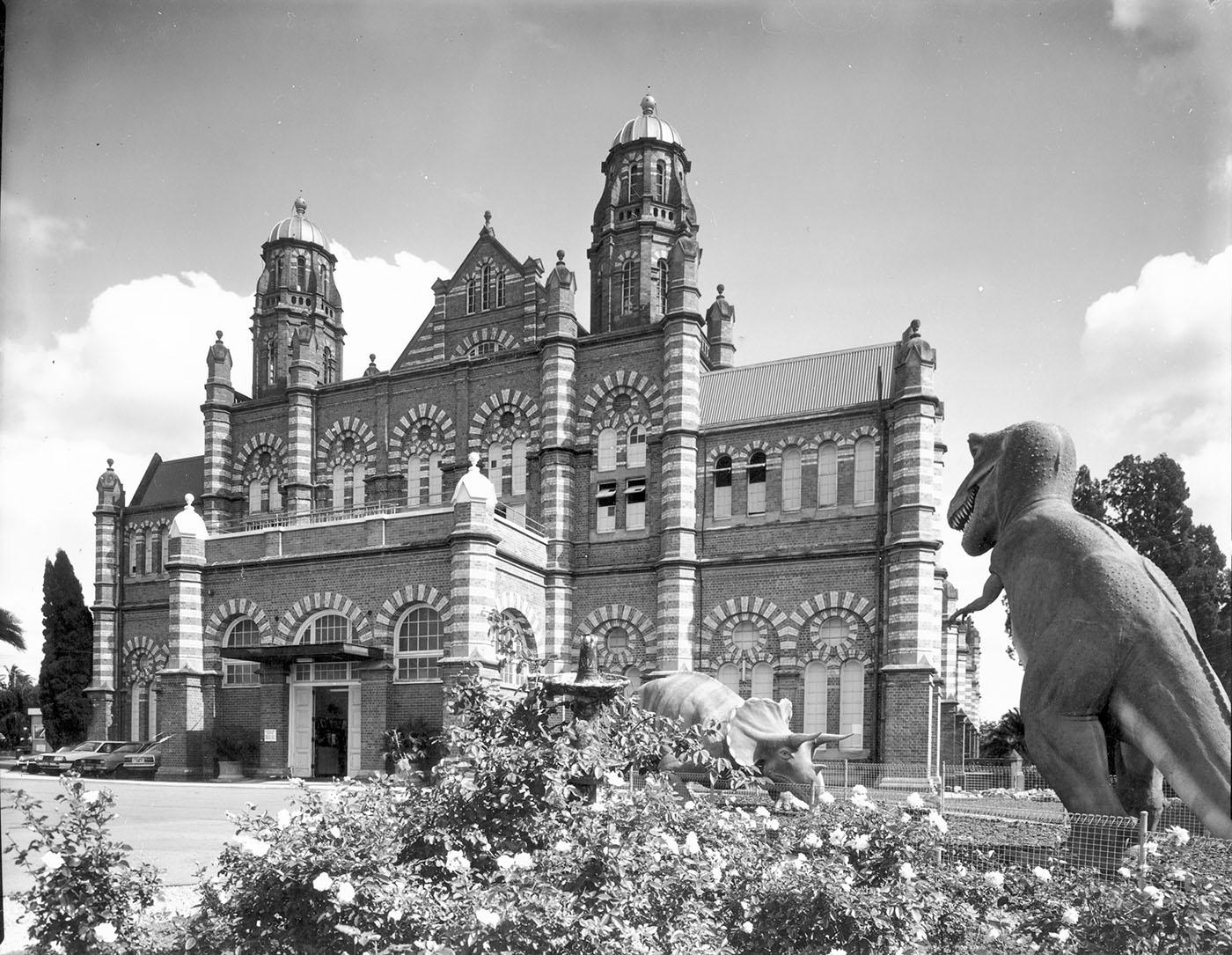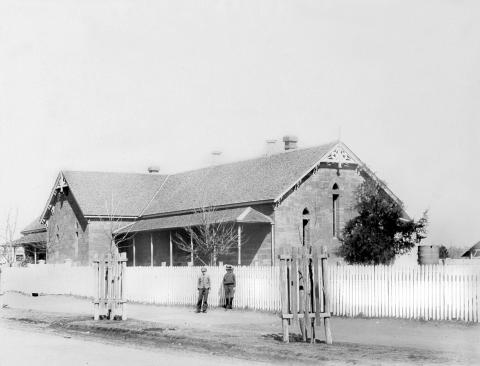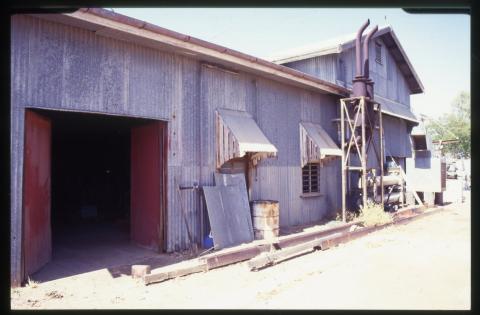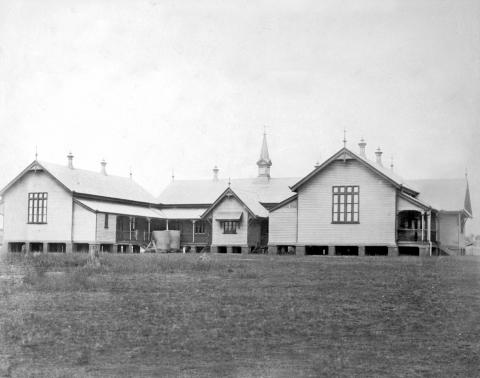
- News of the day
-
Brisbane Telegraph, Tuesday 13 November 1951, page 15
"Dino" steps in museum
The Queensland Museum has received its first samples of the footprints of the dinosaur, taken from the roof of the Balgowan mine near Oakey, last week by two of its staff. Mr. J. T. Woods, geologist, and Mr. M. E. McAnna, preparator, have returned with shallow shale slabs, taken out of the roof showing the actual footprints. One impression of a hind foot shows the three large toes and a small toe. They have also brought back smaller footprints which the Director (Mr. G. Mack) says are perhaps those of another species. They also made casts of some of the impressions. Mr. Mack said the specimens had been obtained by the men working under difficult conditions in a drive only two or three feet high. The mine manager and the mine workers had been most helpful.
- Background
-
In 1900 the Brisbane City Council, following the purchase of the Concert Hall's purpose built organ, leased the hall from the Government and organised a program of regular concerts and civic functions. At the same time, the Queensland Museum decided to move to and adapt the Exhibition Hall for a museum, after twenty years in a comparatively smaller purpose built building in William Street. Tenders for altering the Exhibition Hall into a museum were called in March 1899 and involved the construction of a gallery within the main hall, addition of a line of windows in the main northern wall to to light the new gallery and modifications to the basement dining room to provide offices, preparation and storage spaces. The boundary wall and fence along Bowen Bridge Road and Gregory Terrace were completed soon after and the grounds around the building were developed as an ornamental strolling garden. From 1897 to 1929 John Jordan, Curator of the Museum Gardens, is though to have played an important role in the design and development of the grounds. Photographs from the period show the gardens as well established, with a layout and planting character recognisable as very similar to that existing today.
In 1930, following the opening of its City Hall auditorium, the Brisbane City Council vacated the Concert Hall and the space was converted to an art gallery. Further alterations involving the enclosure of the Museum's porte cochere were also carried at this time. The space was occupied until 1974 when the collection was moved to a temporary location in the city while a purpose built gallery was completed on the South Bank precinct. The Queensland Museum then expanded into the space and remained in the building until 1987 when they also moved to the South Bank precinct.
/153.0295483,-27.4524285,7/450x450@2x.png?access_token=pk.eyJ1IjoicXNhLWRpc2NvLXFsZCIsImEiOiJjamJmdTgyZXEyeWNjMnlxZm8xcmtieHgxIn0.lmT9J5tTPKGuuccQgCVSAg)



